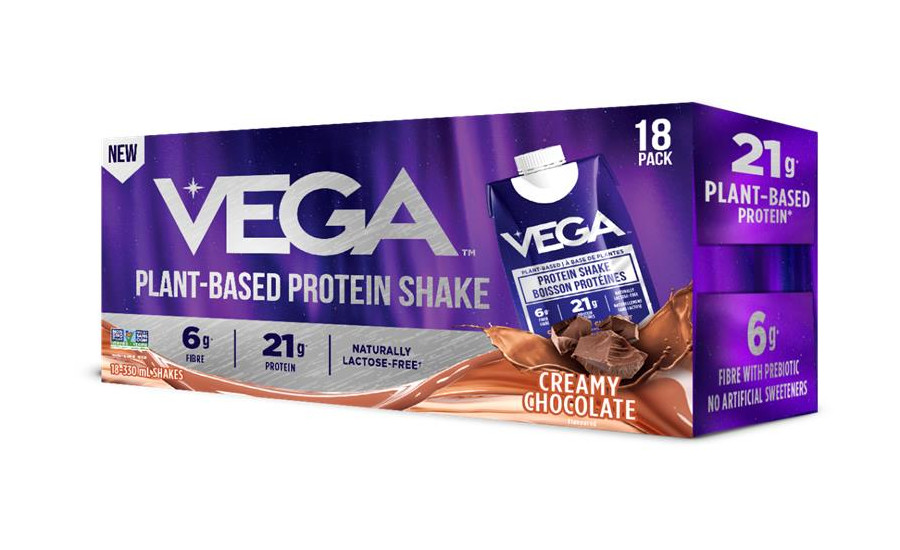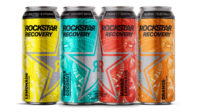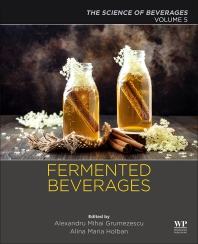Joint health solutions see demand across demographics
Interest in functional foods, drinks prompts beverage innovation for bone, joint health

(Image courtesy of ADM)
When it comes to demand for products that support bone and joint health, according to a report by Markets and Markets, the global bone and joint health supplements market is predicted to grow given the rising demand for nutritional supplements like calcium and vitamin D.
According to the report, the market is projected to reach $17.6 billion by 2027, recording a compound annual growth rate (CAGR) of 8.5% during the forecast period, 2022-2027.
“Consumers are becoming increasingly aware of the risks and prevalence of nutritional deficiencies,” the report states. “Also, their knowledge about how nutritional deficiencies can be optimized through supplementation will drive increased intake of supplements further driving the bone and joint health supplements market growth. The link between diet and health is significant, and people are opting for healthier supplement alternatives.”
Vaughn DuBow, senior director for product portfolio marketing and health and wellness at ADM, Chicago, explains that the bone and joint health market is gaining momentum, driven by rising consumer awareness of mobility, aging and long-term wellness.
“While traditionally associated with older adults, joint health solutions are now resonating with younger consumers who recognize the importance of supportive care,” he says. “Factors such as heightened participation in physical activities, concerns about sedentary lifestyles and the desire to stay active into later years are fueling demand for functional products that support joint and skeletal health.”
DuBow points to bone density loss as one area driving the market, particularly among women who are aware that bone density naturally declines with age, especially during the stages of menopause.
“As a result, more consumers in this group are looking for solutions that help maintain strong bones and support overall joint function,” he explains. “Additionally, body composition and metabolic health impact bone and joint health — excess weight can negatively impact joint function, leading to interest in functional ingredients that support weight management and metabolic function.
“This shift is expanding the scope of the bone and joint health market beyond traditional supplements to include probiotics, plant-based ingredients like protein and botanical extracts that support holistic health,” DuBow continues.
Shil Kothari, CEO at IminoTech Inc., Carson City, Nev., also notes that this market continues to grow — encompassing healthy aging, sports and active nutrition, as well as pain and inflammation solutions.
“The U.S. Centers for Disease Control projects that by 2040, 78 million U.S. adults will have arthritis — a 44% increase from 2015 — indicating a growing demand for joint health products,” Kothari says. “Additionally, nearly half of 18-34 year olds surveyed expressed interest in improving bone and joint health, suggesting further expansion of this market opportunity.
“Consumers of all ages are increasingly adopting a proactive approach to extending their health span — the years of good health that enable an active lifestyle — while seeking non-pharmaceutical solutions for chronic pain and inflammation,” he continues. “Beverage manufacturers are well-positioned to meet this demand. A 2023 survey found that 89% of consumers prefer functional food and beverages over supplements for health support.”
Effective solutions
Given the increased demand for solutions that support bone and joint health, experts highlight the ingredients beverage-makers are utilizing, as well as the benefits they provide.
Niki Kennedy, director of insights and content at Chicago-based Glanbia Nutritionals, says that calcium remains an essential component in formulations to support bone health; however, she adds that other minerals are crucial in beverage solutions.
“Calcium is the default when it comes to ingredients for bone health, but what many consumers don’t understand is the bioavailability of the calcium to bones without supporting trace minerals, like magnesium and vitamin D,” she explains. “While calcium is essential in providing strength and structure to bones, calcium is not the only mineral involved in keeping bones healthy.

“Like calcium, phosphorus and magnesium in the body are primarily stored in the bones,” Kennedy continues. “Phosphorus is crucial for bone growth and mineralization, whereas magnesium is necessary for the proper utilization of vitamin D and calcium to maintain bone density.”
Kennedy points to TruCal from Glanbia as a calcium source that offers more than just calcium.
“Made from milk, TruCal is a pure food source of bone health nutrients with seven key minerals optimally balanced for bone support,” she says. “This milk mineral complex contains calcium, phosphorus, magnesium and potassium along with the trace minerals zinc, copper and iron.
“Fortifying with a balanced milk mineral complex that provides complete bone support (rather than just calcium) is a way to make your product stand out to consumers,” Kennedy continues. “As a natural, clean label ingredient made from a wholesome food consumers trust, milk-derived TruCal is ideal for a wide range of applications including powder drink mixes and ready-to-drink beverages.”
Michael Crabtree, director of scientific affairs and product development at Minneapolis-based Bioenergy Life Science, says that alongside calcium and vitamin D, collagen peptides “reign supreme” in delivering structural support and strength.
“Collagen rebuilds cartilage and improves joint flexibility, while calcium and vitamin D fortify bone density, combating osteoporosis — a combo that’s long been a consumer favorite,” he says. “However, a new wave of ingredients targeting cellular energy and resilience is emerging, with Bioenergy Ribose and RiaGev offering a fresh perspective. Though not yet staples in this space, their ability to enhance ATP, NAD+, and glutathione levels could redefine how beverages support joint and bone vitality, especially for [the] active and aging.”
ADM’s DuBow notes that beverage-makers are incorporating a variety of functional ingredients into applications to meet demand for solutions that support bone health.
“For example, soy isoflavones, such as those found in our Novasoy, have been studied for their potential role in maintaining healthy bones following the transition into menopause,” he says. “Both sensory impact and efficaciousness should be considered when working with soy isoflavones, and both of which can be solved through the use of Novasoy, which has exceptional solubility and high functionality, excellent for incorporation into beverages.
While traditionally associated with older adults, joint health solutions are now resonating with younger consumers who recognize the importance of supportive care.
“We can also leverage our microbiome solutions to support bone and joint health, with our research showing that certain microbial strains may support overall body composition,” DuBow continues. “Specifically, DE111 was used in a study with female collegiate athletes, with results showing a decrease in body fat percentage. In addition to body composition, metabolic health is closely tied to holistic health. Here, we leverage our BPL1 (Bifidobacterium animalis subsp. lactis CECT8145) probiotic and postbiotic, which targets factors relevant to metabolic health.”
IminoTech’s Kothari points to the company’s Q-actin, a patented cucumber extract, as having tremendous potential for beverages supporting joint health.
“Q-actin is a standardized cucumber (Cucumis sativus) extract containing less than 1% ido-BR1, a rare iminosugar with clinically proven joint health benefits,” he says. “Clinical studies have shown that a daily dose of 20 mg of Q-actin significantly improved joint health compared to placebo or glucosamine-chondroitin.”
Kothari highlights how Q-actin works through novel and complementary anti-inflammatory mechanisms that help reduce inflammation by targeting different pathways that would otherwise lead to joint and tissue damage:
- Reducing TNF-α, a protein in the body that triggers inflammation, which can lead to the breakdown of cartilage through certain enzymes called metalloproteinases. Q-actin helps to reduce the levels of TNF-α, which might help prevent cartilage damage.
- Inhibiting enzymes like α-L-iduronidase and sialidases that are involved in inflammation. These enzymes can break down glycosaminoglycans (GAGs), molecules that support the structure of connective tissues like cartilage and tendons. By inhibiting these enzymes, Q-actin helps protect these tissues from inflammation-related damage.
- Reducing hyaluronic acid (HA). If the body produces too much HA, it can become pro-inflammatory by binding to receptors like CD44 on immune cells. This, in turn, can attract inflammatory cells to the site. Q-actin decreases HA production and prevents it from binding to CD44, which helps reduce inflammation and swelling.
Kothari adds that Q-actin is proven safe and effective at daily servings of only 20 mg. “This small dose, coupled with favorable formulation properties, make Q-actin a good fit for a wide range of beverage formats, including RTDs, shots, stick packs, bulk powders, and effervescent tablets,” he says.
Additionally, Kothari notes that Q-actin, being a cucumber-derived extract, has a mild, neutral to slightly vegetal taste typical of cucumber, which is generally subtle and not overpowering.
“Q-actin has a faint, fresh, green odor that is easily masked by flavorings, posing no significant formulation challenge,” he explains. “As an aqueous extract, Q-actin is inherently water-soluble, a key advantage for beverage formulation. Stable under neutral pH and moderate temperatures. Three-to-five-year shelf life.”
What to watch
As the sports nutrition space becomes more inclusive, extending beyond traditional sports and recovery drinks, experts weigh in on what the future holds for beverages that support bone and joint health.
Bioenergy’s Crabtree anticipates a crossover between the sports drink market and beverages that support bone and joint health.
“In bone and joint health, their role is nascent but promising. By 2030, we might see them bridge these markets, powering a $50 billion-plus functional beverage space,” Crabtree says. “Expect digital buzz (hello, X influencers) and clean-label innovation to propel their rise.”
IminoTech’s Kothari predicts that increased demand will prompt further innovation in the sport nutrition space.
“These markets will continue to grow, which will fuel opportunities for innovative products that offer credible, science-based solutions in delicious, convenient formats that consumers’ desire,” he says.
For bone and joint health, ADM’s DuBow anticipates the industry will see a greater emphasis on plant-based ingredients, such as soy and pea, while postbiotics will play a growing role in supporting metabolic health and overall mobility.
“Ultimately, as consumer demand for personalization and science-backed solutions grows, beverage-makers will need to differentiate their products through targeted health benefits, innovative ingredient pairings and clean-label transparency to formulate beverages that align with consumers’ individual wellness goals,” he concludes.
Looking for a reprint of this article?
From high-res PDFs to custom plaques, order your copy today!









